Mad About Mallows
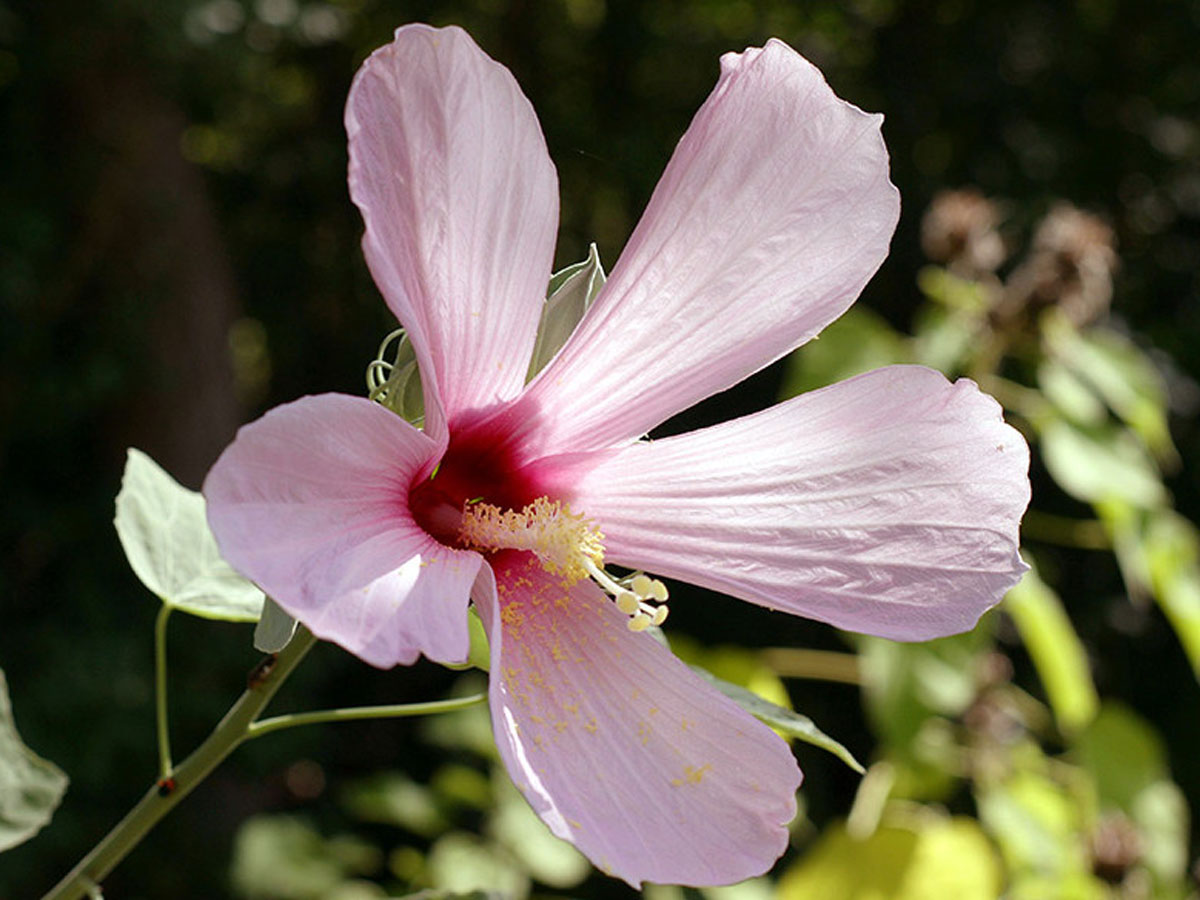
The delicate petals of swamp rose-mallow (Hibiscus grandiflorus) reach out and give gardeners a visual high-five. PHOTO Ray Mathews
MALLOWS, OR MEMBERS OF THE MALVACEAE FAMILY (which includes the genera Hibiscus and Sida), add striking beauty to landscapes with big, papery blooms, heart-shaped leaves and otherworldly seed pods. Run through a roll call of our faves below, and you’re likely to end up mad about mallows too. They’re strong and beautiful and even come with candy … sort of. What’s not to love?
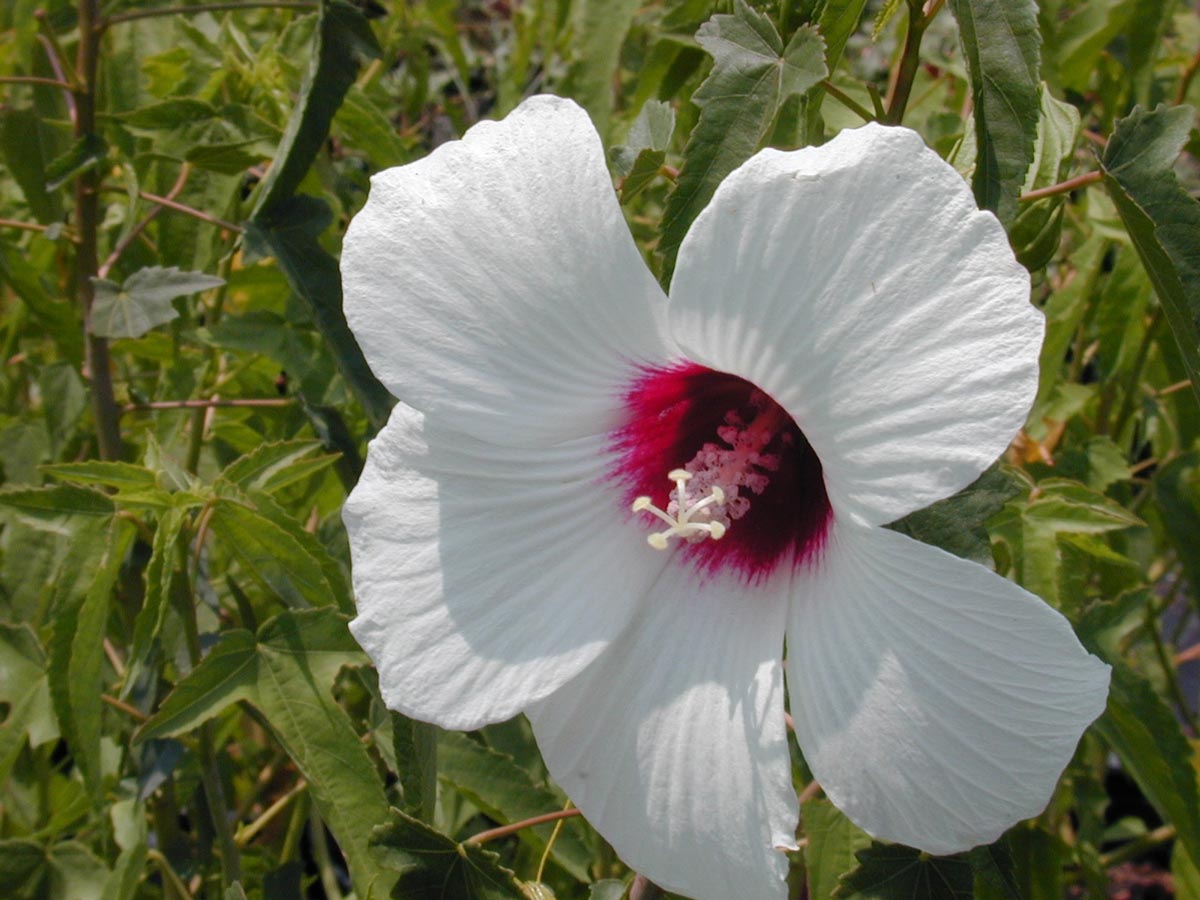
PHOTO Joseph A. Marcus
Wetland Wonder: Gorgeous halberdleaf rose-mallow (Hibiscus laevis) typically grows to 6 feet tall, making this towering beauty a “glamazon,” if you will. They feel right at home in wet areas such as low-lying marshes, and one has been known to perk up alongside the Center’s Courtyard Spring in summer. Look for its blooms — snow white with deep scarlet in the center — next to the spring’s light turquoise water from May to November.
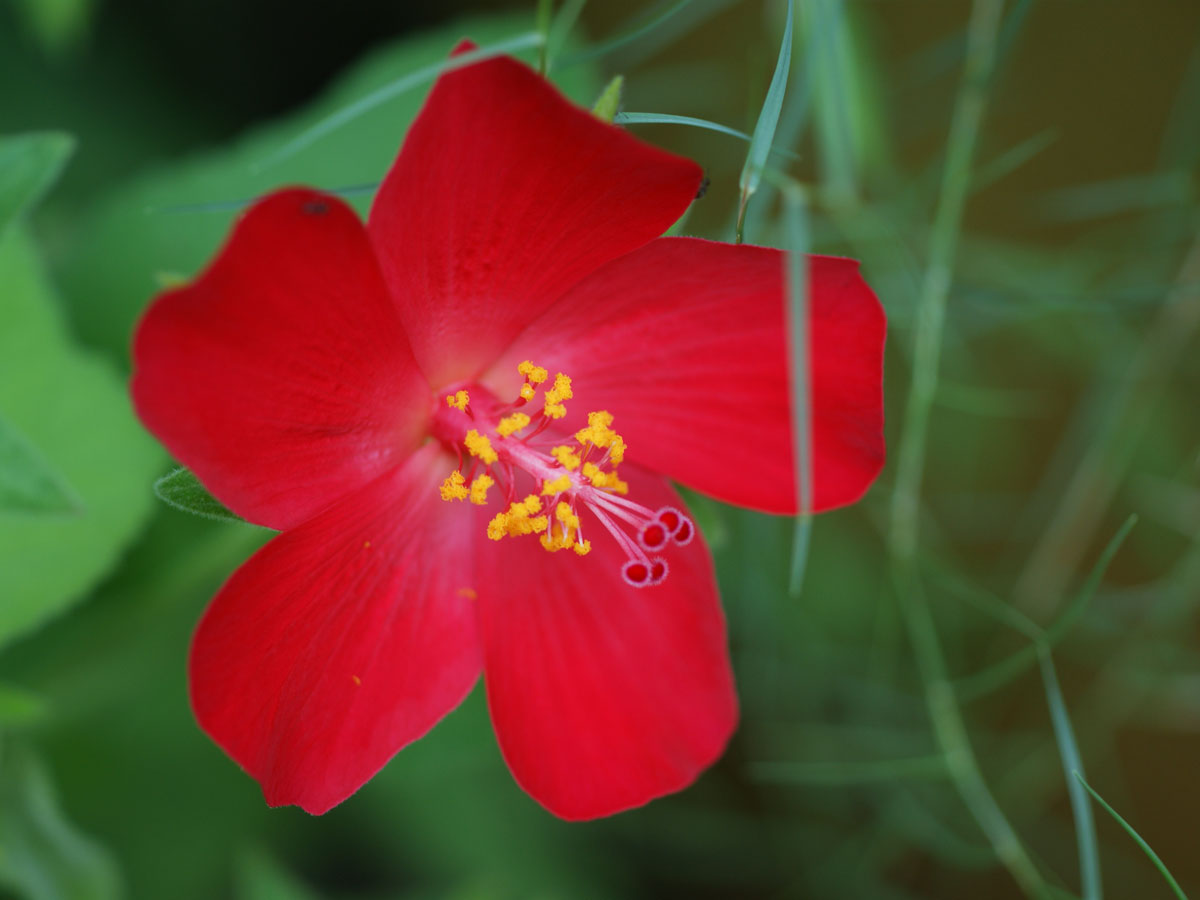
PHOTO Ray Mathews
Hot Stuff: During the hottest parts of the year — while most humans are wilting outdoors or running from one air-conditioned dwelling to another — the hardy heartleaf rose-mallow (Hibiscus martianus) brings sanguine petals to otherwise drab summer gardens. Being a champ in the heat isn’t its only winning qualities: Those vibrant red blooms can reach 3 inches across, and the heartleaf does well in containers, making it a great choice for patio gardeners.
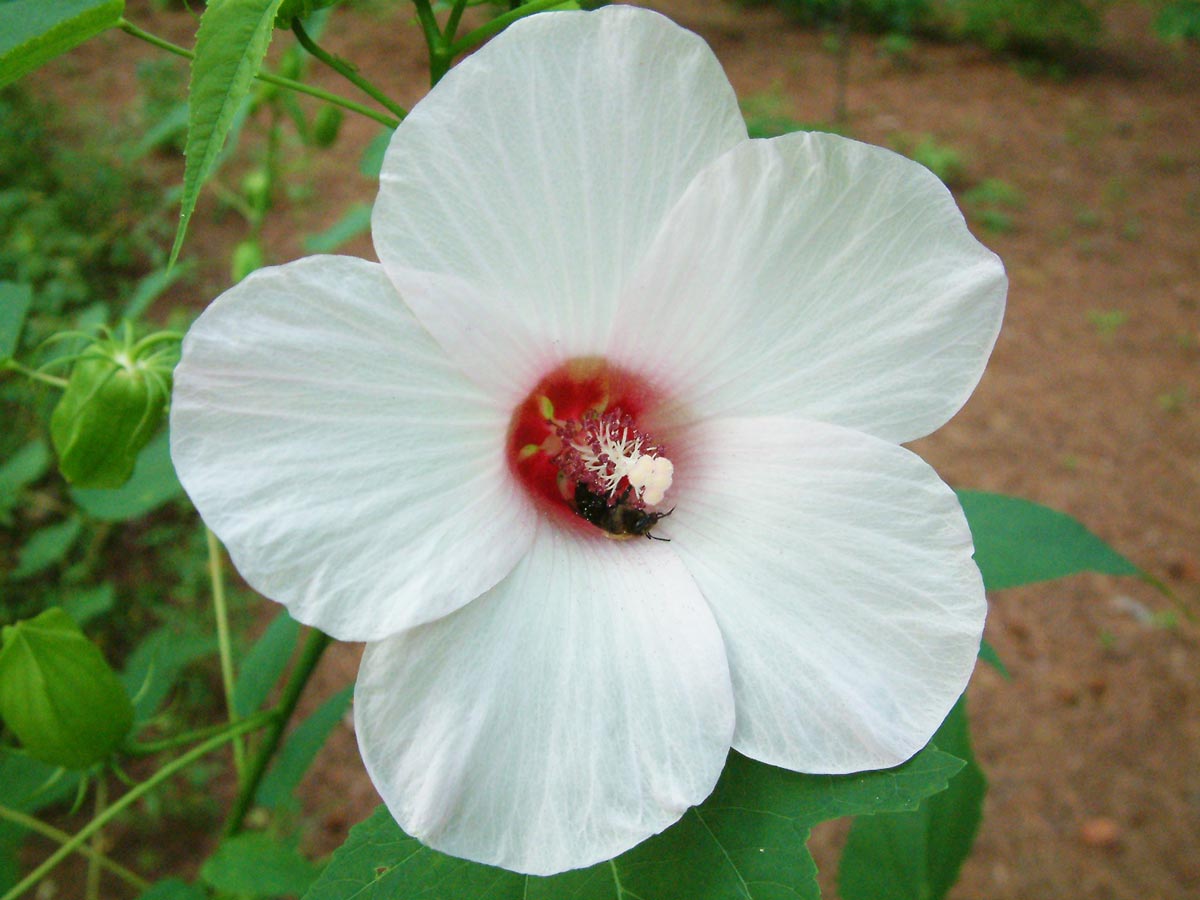
PHOTO Stefan Bloodworth
S’more, Please: Like Texans flocking to swimming holes in summer, most mallows like water. In fact, mallows are as natural in a wetland garden as marshmallows are on a s’more. The comparison isn’t just apt, it’s etymological: Some mallows produce a sap that, when whipped with sugar, made the original marshmallow candy. Hibiscus moscheutos reps the plant’s confectionary connection in its common name, marshmallow hibiscus.

PHOTO Ray Mathews
Swamp Thing: The fragile pink petals of swamp rose-mallow (Hibiscus grandiflorus) are more spread out than those of other mallows, making its blooms look even more delicate. Its daintiness is offset by the edgier, toothed quality of its jagged three-lobed leaves. It’s right at home along the swampy edges Gulf Coast states from Texas to Florida.
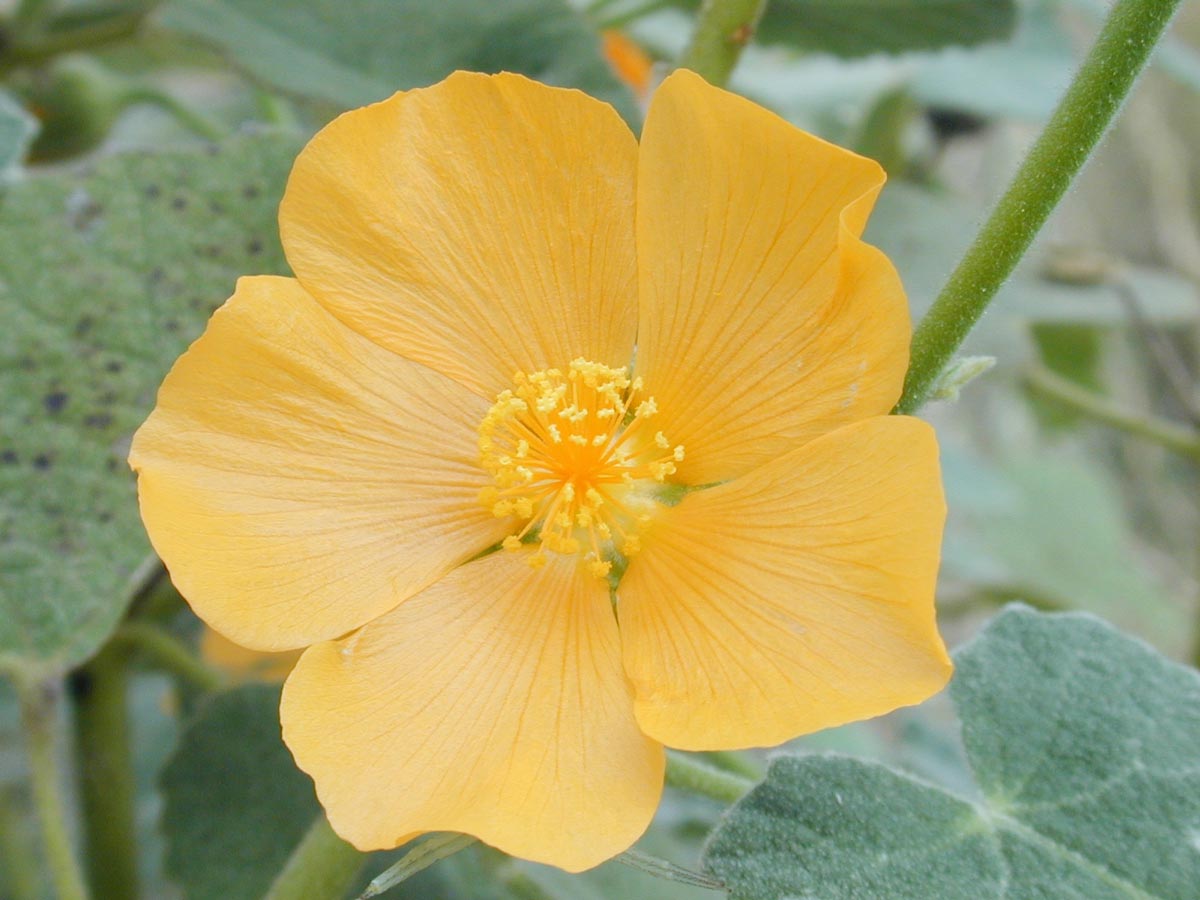
PHOTO Joseph A. Marcus
True Grit: Velvet-leaf mallow (Allowissadula holosericea), also known as Chisos Mountain false Indian-mallow, is a slightly more xeric variety that can survive in dry, rocky soil (though it prefers moist conditions and needs deep watering to get established). Center Propagation Specialist Susan Prosperie says she loves “the texture of the leaves and the beautiful apricot color of its flowers.” She’s not alone. Our nursery manager is so enamored with this flower he named his daughter after it, describing the plant as “soft and pretty but tough!”
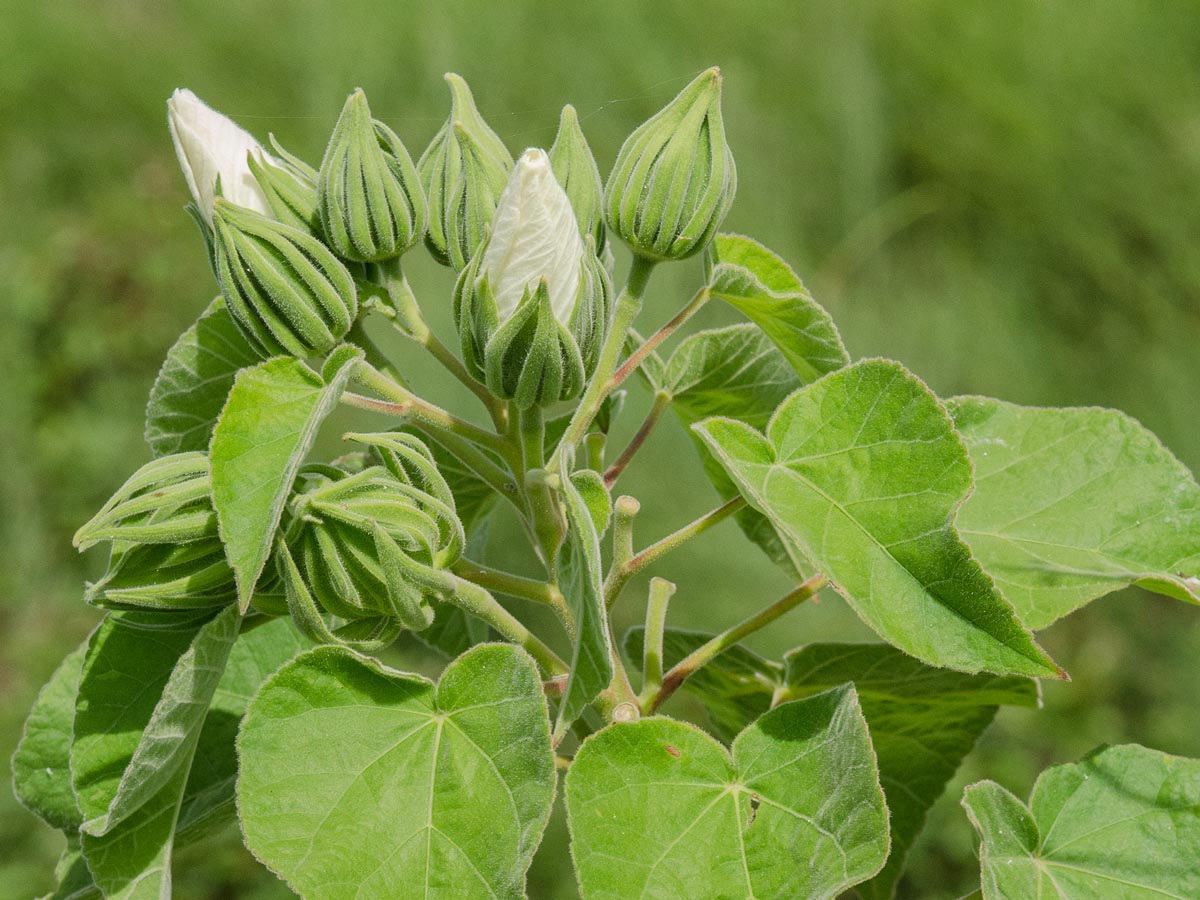
PHOTO Peggy Romfh
Fuzz Factor: The leaves of most mallows are covered with fine hairs that help trap moisture and shield leaves from harsh sunlight, but — true to its name — the woolly rose-mallow (Hibiscus lasiocarpos) takes fuzziness to new levels (its seed pods are particularly plush). It’s also known as “false cotton” due to its strong resemblance to plants in the cotton genus, Gossypium.

